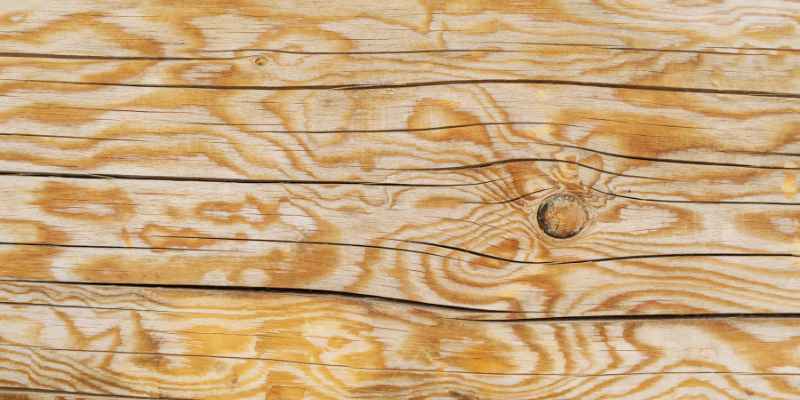Larch wood is best used for boats, framing, roof shingles, and railway ties due to its durability and rot-resistance. Additionally, larch wood has medicinal properties in its needles and is commonly used for exterior cladding, beams, and joinery in construction projects.
Its high density and toughness make it an ideal choice for yacht building and other structural components. Moreover, larch wood sourced from cold climates like Siberian Larch is particularly durable and resistant to decay, making it a preferred material for various applications.
By carefully selecting larch wood, builders and craftsmen can benefit from its exceptional strength and longevity in their projects, ensuring a reliable and long-lasting result.
Exploring Larch Wood
Larch wood is highly valued for its durability and strength, making it ideal for boat construction, framing, roof shingles, and railway ties. It is also known for its medicinal properties found in its needles.
What Is Larch Wood?
Larch wood is a durable and solid material, known for its rot-proof properties. It is predominantly used in boat construction, framing, roof shingles, and railway ties due to its longevity. Larch wood also possesses beneficial medicinal qualities in its needles.
Difference Between Softwood And Hardwood
Siberian Larch timber is classified as a softwood, sourced from trees in cold climates, resulting in exceptional durability and natural resistance to decay. In contrast, hardwoods are typically denser than softwoods and are sourced from deciduous trees.
Properties And Durability
Larch wood is highly valued for its remarkable properties and exceptional durability. It possesses a range of characteristics that make it an ideal choice for various applications. Let’s delve into the distinct features that contribute to its impressive resistance to rot and decay as well as its dimensional stability.
Resistance To Rot And Decay
Larch wood is renowned for its exceptional resistance to rot, decay, and insect damage. This unique quality is attributed to its natural oils and resins, which act as a protective barrier against the elements. These oils and resins impede the growth of fungi and prevent moisture from seeping into the wood, significantly extending its lifespan.
Unlike other types of wood that may require regular treatments or coatings, larch wood possesses inherent qualities that make it naturally resistant to decay. This makes it an ideal choice for outdoor applications such as decking, siding, and fencing, where exposure to moisture and environmental elements is a concern.
Dimensional Stability
Another remarkable property of larch wood is its impressive dimensional stability. This means that it is less prone to shrinkage, warping, or twisting compared to other types of wood. Its low coefficient of movement ensures that it retains its shape and size, even in fluctuating humidity or temperature conditions.
This dimensional stability makes larch wood an excellent choice for applications where precision and longevity are crucial. It is often used in construction, particularly for structural framing, roof shingles, and railway ties. Its ability to maintain its shape ensures a sturdy and reliable foundation for various architectural projects.
Versatile Applications
Larch wood is renowned for its versatility and finds numerous applications in various industries. Its unique properties make it a popular choice for construction, exterior cladding, and framing projects. Let’s explore some of the versatile applications of larch wood.
Construction And Building Materials
Larch wood is highly valued in the construction industry for its strength, durability, and natural resistance to rot, insects, and moisture. It is commonly used for rough dimension lumber, small timbers, planks, boards, and poles. The heavy and strong nature of larch wood makes it ideal for structural purposes in building construction. Additionally, its natural resistance to decay ensures longevity, reducing the need for frequent maintenance.
Exterior Cladding And Framing
When it comes to exterior applications, larch wood shines. Its natural resistance to decay and insects makes it an excellent choice for cladding and framing in outdoor settings. Larch wood’s attractive appearance and unique characteristics add charm and character to any exterior design. Whether used for siding, shingles, or decking, larch wood provides a natural and charming aesthetic that enhances the beauty of any building.
Larch wood’s versatility extends beyond construction and exterior applications. It also serves as a valuable material for various other purposes. Its use in boat design, framing, roofing, and railway ties highlights its exceptional strength and durability. Furthermore, larch wood possesses medicinal properties in its needles, making it a valuable resource for traditional medicine.
In conclusion, larch wood’s versatility and wide range of applications make it a valuable choice for various industries. Its strength, durability, and natural resistance to decay and insects make it a reliable material for construction and exterior projects. Whether you’re looking to build a sturdy structure or enhance the aesthetics of your exteriors, larch wood is an excellent option to consider.
Commercial And Artistic Uses
Larch wood, known for its durability and resistance, finds applications in various commercial and artistic fields.
Yacht Building And Joinery
Larch wood’s robust nature makes it ideal for yacht building and precision joinery work.
Artistic Applications In Gardening
Larch wood creatively enhances garden settings with its natural charm and durability.
Medicinal And Therapeutic Qualities

Larch wood, known for its durability and resistance, also possesses medicinal and therapeutic properties. The traditional uses and health benefits of larch contribute to its value beyond its physical attributes.
Traditional Medicinal Uses
For centuries, larch has been used in traditional medicine for its healing properties. The needles of the larch tree are particularly renowned for their medicinal benefits.
Health Benefits Of Larch
The consumption of larch products has been associated with various health benefits such as immune system support, digestive health, and respiratory wellness. This natural resource offers valuable therapeutic attributes.
Challenges And Maintenance
Larch wood is highly valued for its durability and strength, making it ideal for boat design, framing, roof shingles, and railway ties. Regular maintenance is necessary due to its susceptibility to humidity fluctuations. This softwood is prized for its rot and moisture resistance, offering longevity in various applications.
Susceptibility To Humidity Fluctuations
One of the key challenges associated with larch wood is its susceptibility to fluctuations in humidity. Changes in environmental moisture levels can lead to warping or cracking of larch wood products. Moisture content in the surrounding air can affect the physical properties of larch wood, making it important to protect it from excessive exposure to high or low humidity.
Regular Inspection And Care
Regular inspection and maintenance play a crucial role in ensuring the longevity of larch wood items. Implementing a routine inspection schedule, including checking for signs of damage and ensuring proper sealing, is essential for preserving the quality of larch wood. Timely repairs and applying protective finishes can help prevent potential deterioration caused by external factors.
Environmental Impact
When considering the environmental impact of larch wood, it is crucial to assess its sustainability and renewability. Larch wood is known for its eco-friendly characteristics, making it a popular choice for conscientious consumers.
Sustainability And Renewability
Larch wood stands out for its sustainable qualities as it is sourced from forests that are responsibly managed. This ensures that the trees are harvested in a way that promotes regeneration and minimal environmental impact.
Considerations For Eco-friendly Usage
Utilizing larch wood in various applications can contribute to eco-friendly practices. Its durability and longevity reduce the need for frequent replacements, thus conserving resources and reducing waste.
Frequently Asked Questions For What Is Larch Wood Used For
What Are The Disadvantages Of Larch Wood?
Disadvantages of larch wood include susceptibility to humidity changes, requiring regular inspection and maintenance.
What Is Larch Wood Best Used For?
Larch wood is best used for constructing boats, framing, roof shingles, railway ties, and exterior cladding. It’s durable, rot-proof, and has medicinal properties. Additionally, it’s used for structural components like beams and posts due to its high density and toughness.
Is Larch A Softwood Or Hardwood?
Larch wood is a softwood that is commonly used for construction, boat building, framing, and exterior cladding. It is known for its durability, resistance to decay, and medicinal properties. Larch wood is not a hardwood.
Does Larch Wood Rot?
Larch wood is rot-resistant, making it durable and suitable for outdoor use. It is commonly used for construction, framing, boat-making, roof shingles, railway ties, and exterior cladding. Larch wood also has medicinal properties in its needles.
Conclusion
Larch wood is a versatile and durable material that finds use in various applications. From building construction to yacht building and exterior cladding, its natural resistance to decay and durability make it an ideal choice for structural components and outdoor usage.
Its medicinal properties and resistance to rot and insects make it a valuable resource in different industries.


